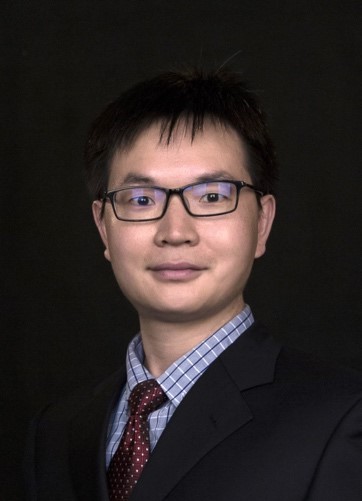Yu Fa-Xing
 Fa-Xing Yu, Ph.D.
Fa-Xing Yu, Ph.D.
Ph.D. National University of Singapore, Biochemistry, 2010
B.Sc. (Honors) National University of Singapore, Biochemistry, 2004
Institutes of Biomedical Sciences and Children’s Hospital of Fudan University (2014-Present)
Cancer Center and Department of Pharmacology, University of California San Diego (2010-2014)
Institute of Molecular and Cell Biology, Singapore (2004-1010)
Address: 131 Dong’an Rd, Shanghai 200032
Email: fxyu@fudan.edu.cn
Lab homepage: http://yu-lab.fudan.edu.cn
Yu lab is interested to explore molecular mechanisms responsible for tissue development, regeneration, and cancer. Specific research topics include: 1) regulatory mechanisms and biological/pathological functions of the Hippo signaling pathway; 2) modeling and molecular targeting of cancers, such as gastrointestinal (GI) cancer and solid tumors in childhood; 3) cell migration/invasion. Methods frequently used in the lab include mouse genetics, organoid, imaging, sequencing (single cell), and computational biology. Currently, research associate, post-doc, research assistant, and graduate student positions are available, and we welcome self-motivated researchers or students to apply.
Gu Y, Wang Y, Sha Z, He C, Zhu Y, Li J, Yu A, Zhong Z, Wang X, Sun Y, Lan F, Yu FX*.Transmembrane protein KIRREL1 regulates Hippo signaling via a feedback loop and represents a therapeutic target in YAP/TAZ-active cancers. Cell Reports 2022 Aug 30;40(9):111296.
Qi S, Zhu Y, Liu X, Li P, Wang Y, Zeng Y, Yu A, Wang Y, Sha Z, Zhong Z, Zhu R, Yuan H, Ye D, Huang S, Ling C, Xu Y, Zhou D, Zhang L, Yu, FX*. WWC proteins mediate LATS1/2 activation by Hippo kinases and imply a tumor suppression strategy. Molecular Cell 2022 May 19;82(10):1850-1864.
Wang, Y., Zhu, Y., Gu, Y., Ma, M., Wang, Y., Qi, S., Zeng, Y., Zhu, R., Wang, X., Yu, P., Xu, J., Shu, Y., and Yu, FX*. Stabilization of Motin family proteins in NF2-deficient cells prevents full activation of YAP/TAZ and rapid tumorigenesis. Cell Reports 2021 Dec 7;14(712):eabj8393.
Li Y, Li J, Wang R, Zhang L, Fu G, Wang X, Wang Y, Fang C, Zhang D, Du D, Ma X, Pan M, Guo Q, Xu X, Hu X, Zhou Y, Mo S, Wang H, Gao J, Huang S, Liu Y, Cai S, Hua G*, Peng J*, Yu FX*. Frequent RNF43 mutation contributes to moderate activation of Wnt signaling in colorectal signet-ring cell carcinoma. Protein & Cell 2020 Apr;11(4):292-298.
Pan, B., Yang, Y., Li, J., Wang, Y., Fang, C., Yu, FX.*, & Xu, Y*. USP47-mediated deubiquitination and stabilization of YAP contributes to the progression of colorectal cancer. Protein & Cell 2020 Feb;11(2), 138-143.
Fang C, Li J, Qi S, Lei Y, Zeng Y, Yu P, Hu Z, Zhou Y, Wang Y, Dai R, Li J, Huang S, Xu P, Chen K, Ding C, Yu FX*. An alternatively transcribed TAZ variant negatively regulates JAK-STAT signaling. EMBO Reports 2019 Jun;20(6). pii: e47227.
Gong R, Hong AW, Plouffe SW, Zhao B, Liu G, Yu FX*,Xu Y*, Guan KL*. Opposing roles of conventional and nove PKC in the Hippo-YAP pathway regulation. Cell Research 2015 Aug;25(8):985-8.
Yu FX*, Zhao B, Guan KL*. Hippo Pathway in Organ Size Control, Tissue Homeostasis, and Cancer. Cell 2015 Nov 5;163(4):811-28.(Leading Edge Review)
Yu FX, Luo J, Mo JS, Liu G, Kim YC, Meng Z, Zhao L, Peyman G, Ouyang H, Jiang W, Zhao J, Chen X, Zhang L, Wang CY, Bastian BC, Zhang K, Guan KL. Mutant Gq/11 promote uveal melanoma tumorigenesis by activating YAP. Cancer Cell 2014 Jun 16;25(6):822-30.
Yu FX, Zhang Y, Park HW, Jewell JL, Chen Q, Deng Y, Pan D, Taylor SS, Lai ZC, Guan KL. Protein Kinase A activates the Hippo pathway to modulate cell proliferation and differentiation. Genes & Development 2013 Jun 1;27(11):1223-32.
Yu FX, Zhao B, Panupinthu N, Jewell JL, Lian I, Wang LH, Zhao J, Yuan H, Tumaneng K, Li H, Fu XD, Mill GB, Guan KL. Regulation of the Hippo-YAP pathway by G-protein coupled receptor signaling. Cell 2012 Aug 17;150(4):780-91.